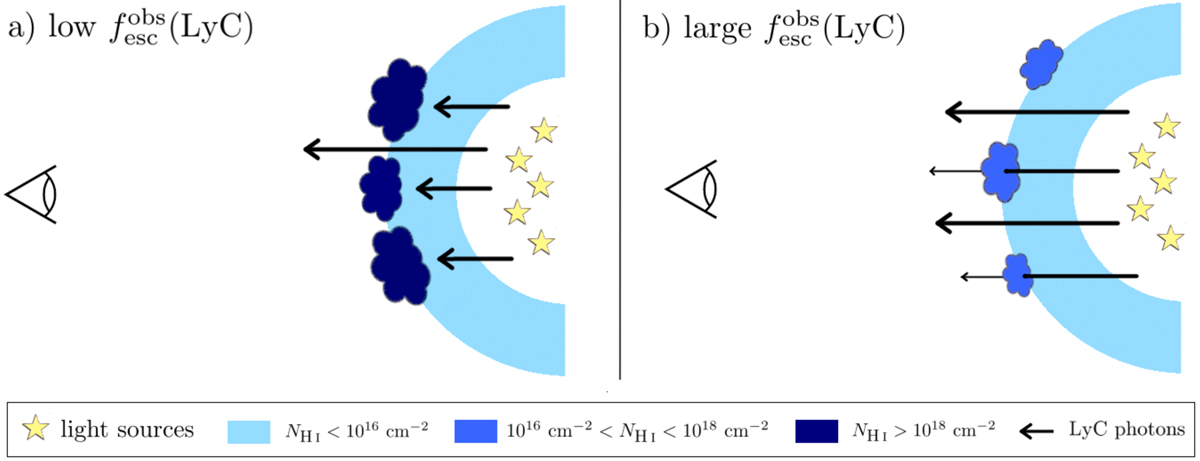Fig. 16.

Illustration of the physical picture discussed in Sect. 5.1. Left: LyC photons escape through channels covered by ![]() cm−2, while H I clouds with
cm−2, while H I clouds with ![]() larger than 1018 cm−2 efficiently absorb the ionizing flux that passes through them. The ISM is ionization bounded such that the escape of ionizing photons is directly proportional to the fraction of low column density paths (1-Cf(H I)) and to the dust attenuation within or in front of these channels (we chose to exclude dust from this illustration because its spatial distribution is still unknown). This physical model likely describes the escape of ionizing photons from the low
larger than 1018 cm−2 efficiently absorb the ionizing flux that passes through them. The ISM is ionization bounded such that the escape of ionizing photons is directly proportional to the fraction of low column density paths (1-Cf(H I)) and to the dust attenuation within or in front of these channels (we chose to exclude dust from this illustration because its spatial distribution is still unknown). This physical model likely describes the escape of ionizing photons from the low ![]() LCEs of our sample. Right: LyC photons escape because there is a higher fraction of low column density channels and because the densest H I clouds do not efficiently absorb LyC photons (
LCEs of our sample. Right: LyC photons escape because there is a higher fraction of low column density channels and because the densest H I clouds do not efficiently absorb LyC photons (![]() cm−2). All the sightlines towards the observer are density-bounded such that the fesc(LyC) cannot be inferred only using the measured Cf(H I). Our work suggests that this physical picture explains the escape of LyC photons in the large
cm−2). All the sightlines towards the observer are density-bounded such that the fesc(LyC) cannot be inferred only using the measured Cf(H I). Our work suggests that this physical picture explains the escape of LyC photons in the large ![]() LCEs (38, 46 and 73%) of our sample.
LCEs (38, 46 and 73%) of our sample.
Current usage metrics show cumulative count of Article Views (full-text article views including HTML views, PDF and ePub downloads, according to the available data) and Abstracts Views on Vision4Press platform.
Data correspond to usage on the plateform after 2015. The current usage metrics is available 48-96 hours after online publication and is updated daily on week days.
Initial download of the metrics may take a while.


